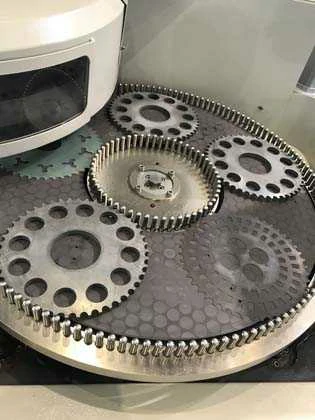The difference between the three concepts of superabrasive tools particle size, particle size number, and particle size

The difference between the three concepts of superabrasive tools particle size, particle size number, and particle size
Superabrasive tools play a crucial role in various industries such as automotive, aerospace, and electronics. These tools are known for their exceptional hardness and cutting efficiency, making them highly desirable for precision machining. Understanding the different concepts related to superabrasive tools, such as particle size, particle size number, and particle size distribution, is essential for optimizing their performance. This article aims to shed light on the differences between these three concepts.
Firstly, let’s examine the concept of particle size. Particle size refers to the dimensions of individual abrasive particles used in superabrasive tools. It is typically measured in micrometers (µm). The particle size directly affects the cutting effectiveness and surface finish of the machining process. Smaller particle sizes generally result in smoother finishes, while larger particles are more aggressive but may yield a rougher surface. Manufacturers carefully select the appropriate particle size based on the desired application and the material being machined.
Next, let’s explore the concept of particle size number. Particle size number, also known as grit size, is a numerical value assigned to distinguish the different grades or sizes of abrasive particles. It provides a standardized way of categorizing abrasive materials based on their size. The particle size number is determined using a mesh-based system. For example, a particle size number of 100 indicates that the abrasive particles pass through a mesh with 100 openings per linear inch, while particles larger than this size are retained. Higher particle size numbers represent smaller particle sizes, indicating finer abrasives.
Lastly, let’s delve into the concept of particle size distribution. Particle size distribution refers to the range of particle sizes present in a superabrasive tool. It provides valuable information about the variation in particle sizes within a given sample. The distribution can be expressed graphically through a histogram or numerically using statistical parameters such as mean particle size and standard deviation. A narrow particle size distribution indicates a more uniform abrasive tool, while a wide distribution suggests a broader range of particle sizes. Controlling the particle size distribution is crucial for achieving consistent machining results.
To summarize, superabrasive tools are characterized by their particle size, particle size number, and particle size distribution. Particle size refers to the dimensions of individual abrasive particles, while particle size number provides a standardized measurement system for categorizing abrasive materials based on their size. Particle size distribution, on the other hand, reveals the range of particle sizes present in a sample. Understanding these concepts allows manufacturers to select the most suitable superabrasive tools for specific applications, ensuring optimal cutting efficiency and surface finish.
In conclusion, the concepts of particle size, particle size number, and particle size distribution are integral to the understanding and selection of superabrasive tools. By considering these factors, manufacturers can tailor their choices to meet the requirements of various industries. As technology continues to advance, further research in this field will undoubtedly lead to even more precise and efficient superabrasive tools.
.webp)






